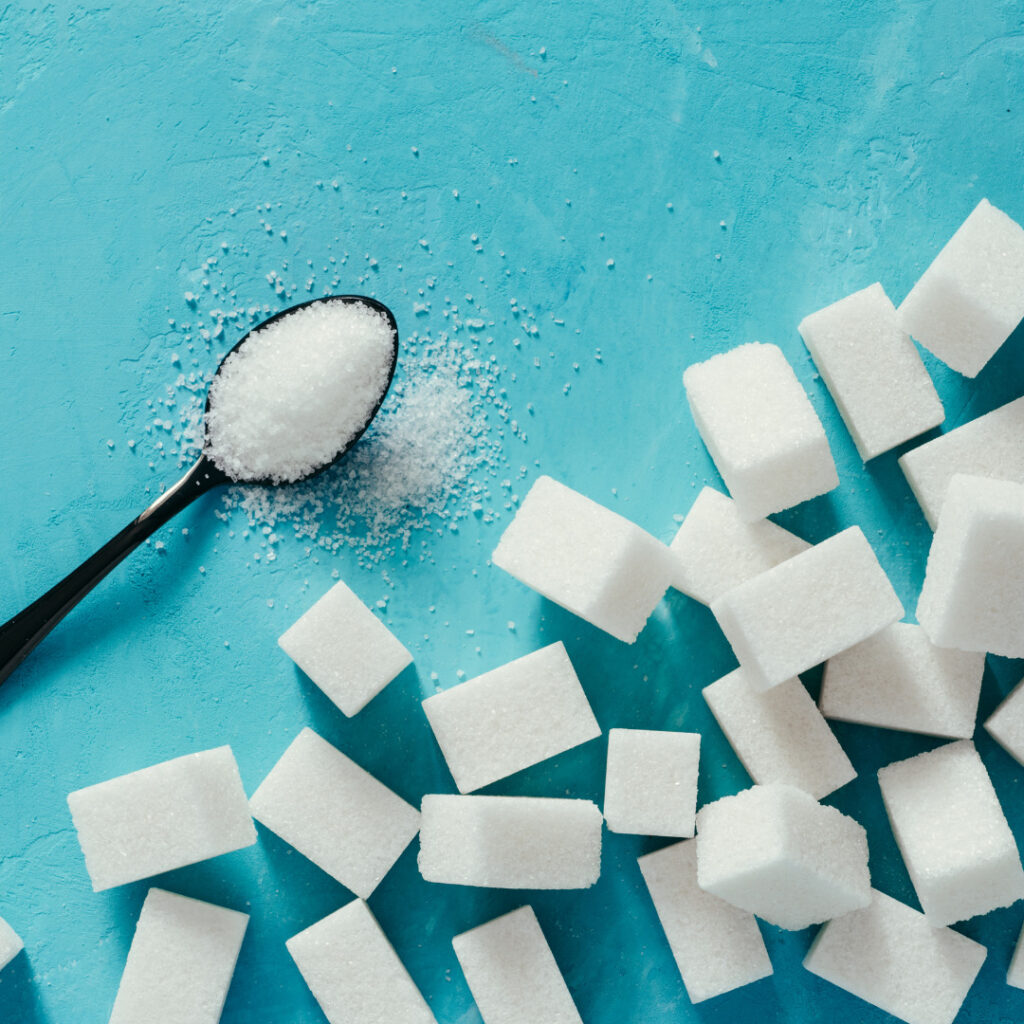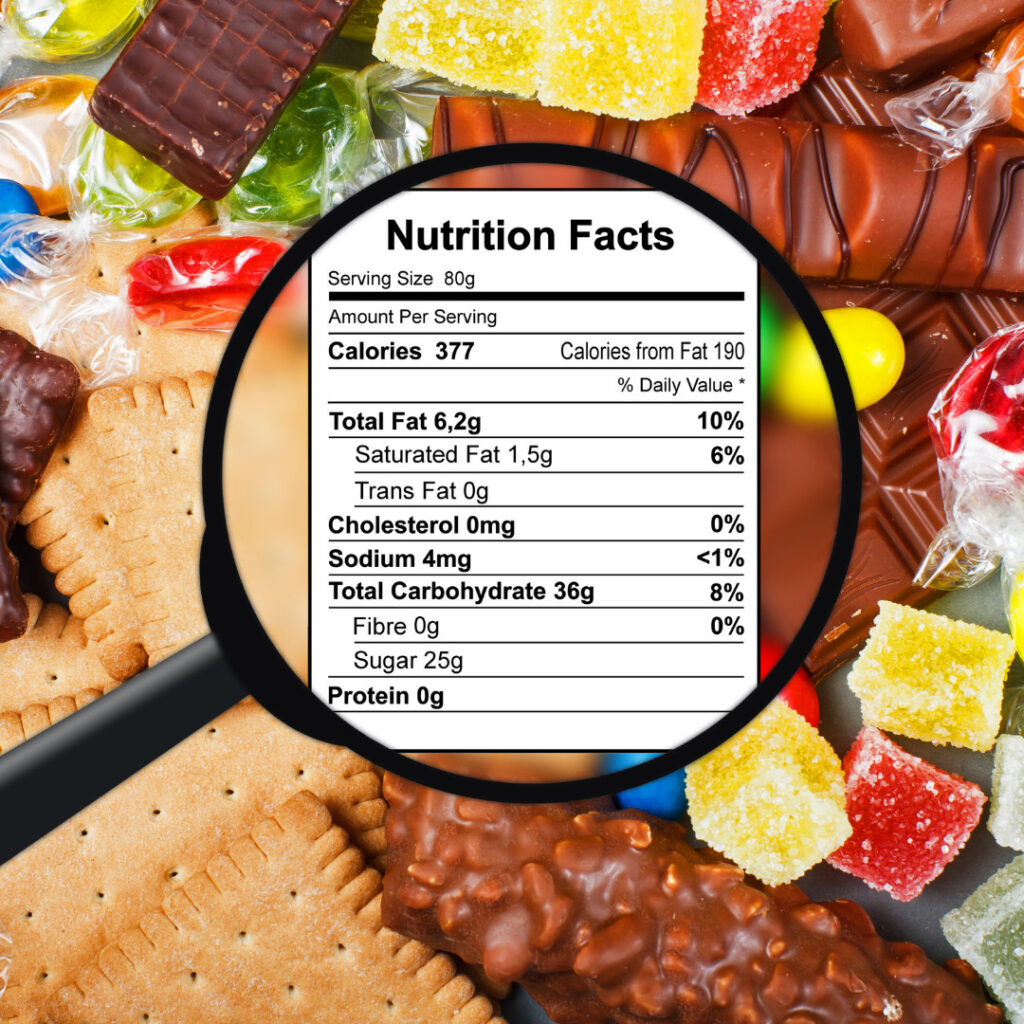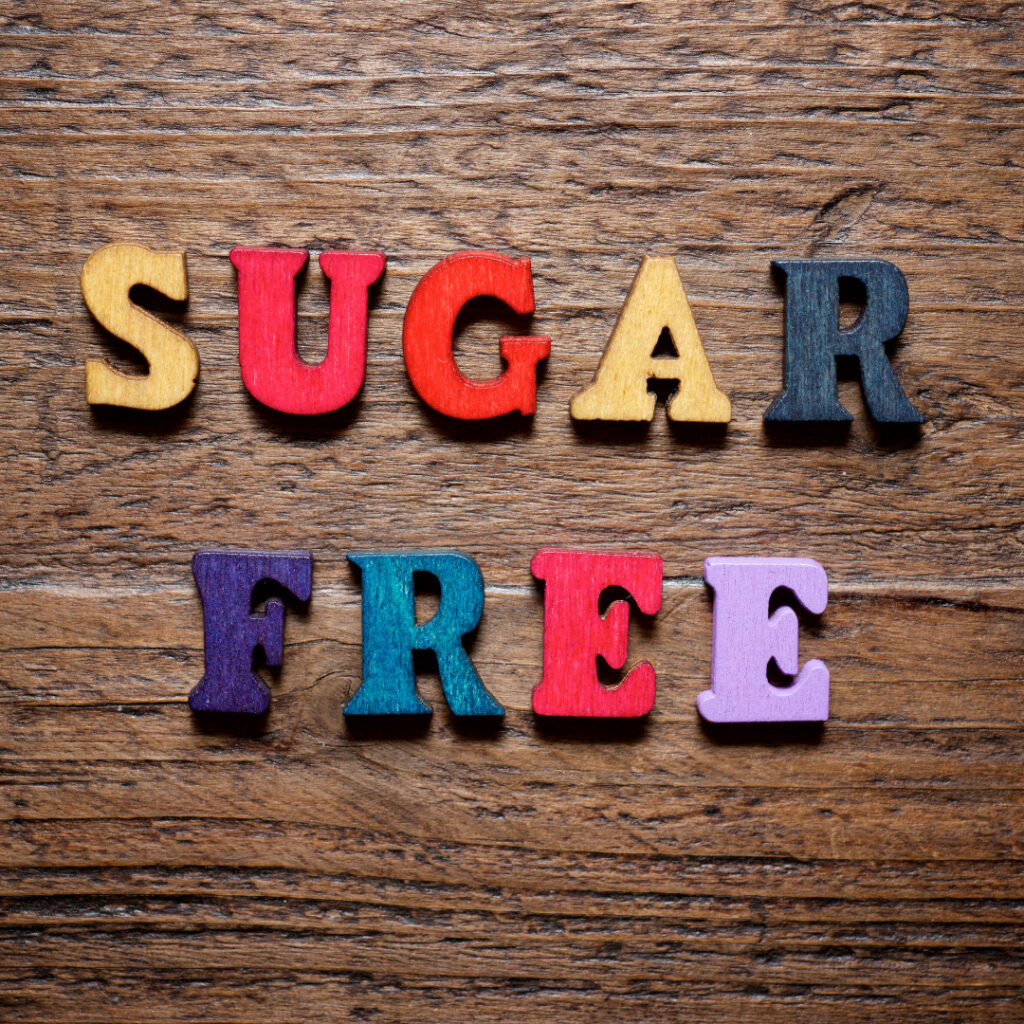Sugar is delicious but can be harmful to our bodies. Let’s be sugar smart by understanding the impacts that sugar can have on our health.
What things contain sugar?
Sugar can be naturally occurring, being found in fruit, veg and milk-based products. These contain calories but they aren’t harmful to our health. However, “free sugars” can be very damaging to our health. Free sugars include any sugars that are added to food or drink such as in flavoured yoghurts, tomato ketchup, smoothies, honey, fizzy drinks and alcohol. Sugar found naturally in milk, fruit and vegetables do not count as free sugars.
The type of sugars that people in the UK eat too much of are free sugars. To reduce the impact of free sugars on our bodies, we need to understand which products have excessive sugars in them and how we can cut down on our sugar intake to live more healthily.

Sugar – not as sweet as you may think!
How much sugar am I allowed to have?
The government recommends that free sugars should not make up more than 5% of the energy (calories) you get from food and drink each day.
When looking at food packaging, you may have seen nutrition labels which come in a grid on the back or side of a product. These labels tell you how much sugar is in the product, as well as information about energy (kJ/kcal), fat, saturates (saturated fat), carbohydrate, protein and salt. When looking at a nutrition label, you can see how much sugar a product has and assess whether it is high or low. Foods with high sugar content contain more than 22.5g of total sugars per 100g. Foods that are low in sugar contain 5g or less of total sugars per 100g.

A typical nutrition label
To help us understand food labels more and make more conscious choices about the things we eat and drink, traffic light labels have also appeared on lots more products. These are often shown of the front of packaging to give you a quick snapshot of the contents, including how much sugar is in there. On a traffic light label, red means high content, amber means medium and green means low. We should aim to eat more things with green or amber colours, rather than red. The greener the label, the healthier the choice.
If you’re struggling to get your head around nutrition labels, The Change4Life Food Scanner can help you to see how much sugar is in the food and drink that you consume. Simply download the app (no login needed) and scan the barcode on the product to see all the sugar content.
Why should I be conscious of my sugar intake?
Despite sugar being delicious, it’s far too easy to consume too much of it, which can be very damaging to our health. Some health issues associated with sugar intake include obesity, type 2 diabetes and tooth decay.
Obesity
Consuming too much sugar can lead to obesity, resulting in a whole heap of health problems such as ill-health and early mortality. According to the UK Government in 2016, 36% of adults were overweight and 14.5% for children in Wales. In addition, 23% of adults were obese compared to 11.7% of children.
Type 2 diabetes
Excessive sugar consumption can also lead to Type 2 diabetes. Diabetes is a lifelong condition that causes a person’s blood sugar to be too high. There are two forms of diabetes: type 1 and type 2. Type 2 diabetes has a combination of both genetic and environmental risk factors. However, obesity is the biggest risk factor for the disease. A high-sugar diet has been linked with an increased likelihood of developing type 2 diabetes due to the links between high sugar intake and obesity.
Tooth decay
Everybody will experience tooth decay, but the likelihood of cavities increases significantly with excessive sugar consumption. When sugar is consumed it interacts with the bacteria within the plaque on our teeth to produce acid which is responsible for tooth decay. This acid slowly dissolves enamel which creates holes or cavities in teeth. If you do have sugar, try to brush your teeth as soon as possible afterwards, as well as twice a day to reduce the harmful effects of sugar on teeth.

Tooth decay can be caused by sugar!
How do I cut down on sugar?
- One of the biggest ways that we consume sugar is through our drinks. Instead of drinking sugary fizzy drinks or squash, opt for water, lower-fat milk, or sugar-free, diet, or no-added-sugar drinks.
- It may taste strange at first but try not to add sugar to your tea, coffee and breakfast cereal – you’ll get used to it! If you can’t go without, try switching from sugar to a sweetener.
- Even smoothies and unsweetened fruit juices have high sugar content, so make sure you limit the amount you have to no more than 150ml a day.
- If you’re eating fruit from a tin, choose the tins of fruit in juice rather than syrup.
- Before buying a product, check the nutrition labels – opt for options of foods with less sugar.
- Rather than spreading high sugar syrups, spreads and sauces on your foods, try the low-fat and reduced-sugar options.
- Choose to have unsweetened cereal rather than sugary cereal. Add some fruit to your cereal for sweetness and it’ll also count toward your 5 A Day!

Sugar – not as sweet as it may seem!
Useful links:
For more information about your body and your health, check out TheSprout’s Info page here!
The NHS’ Change4Life have some great resources about living a healthier and happier lifestyle, including information about sugar. Check out their website and their app (as mentioned above).
Take a look at some healthy, sugar-free recipes online, for example on the BBC website.




